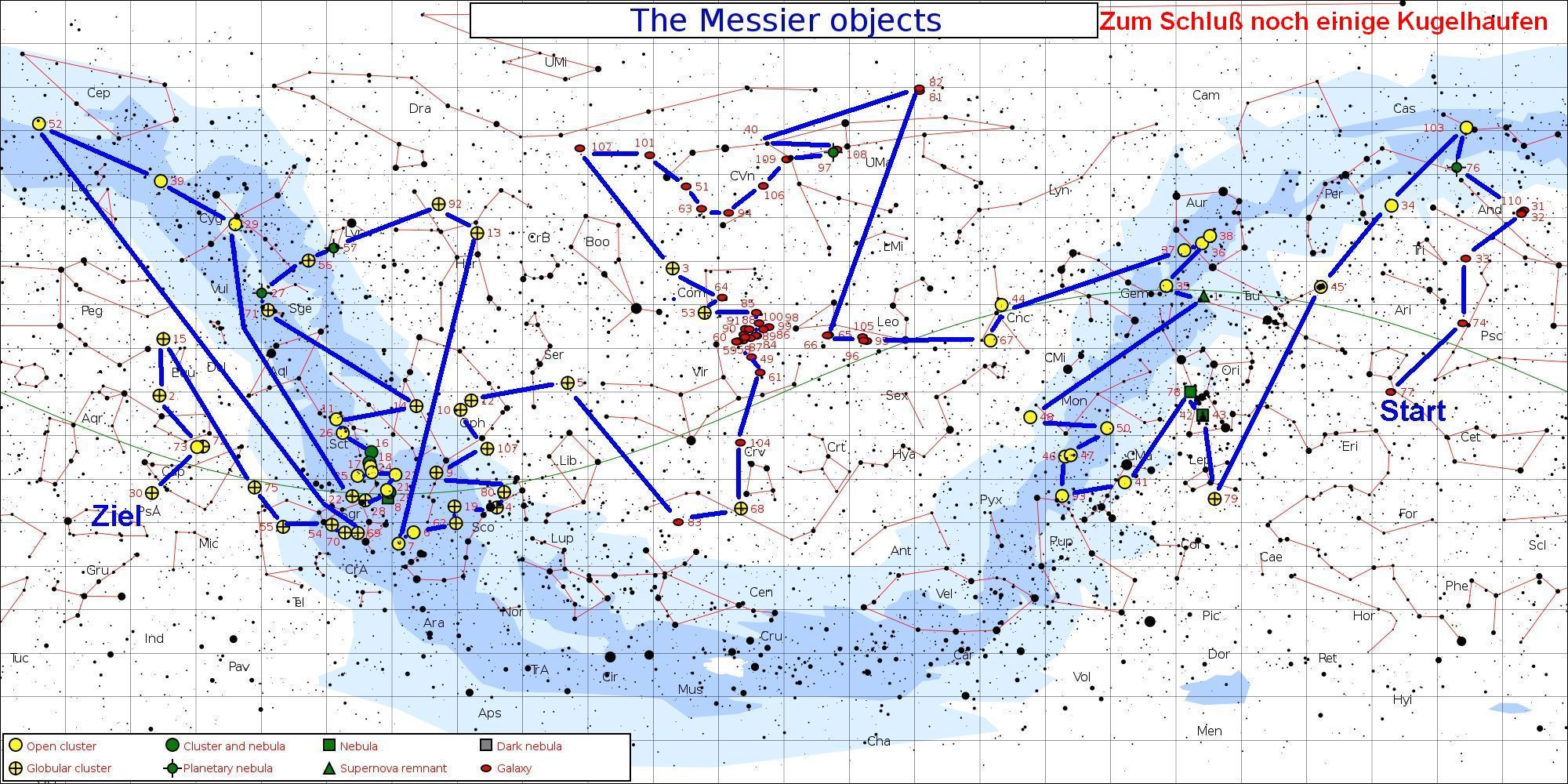

18:32 CET: The 120 mm refractor is ready
|
19:22 CET: Venus (above) and Jupiter in the dusk
|
The critical evening objectsThe galaxies M74 and M77 need to be observed first. Their position is |
M74 and M77 above the western horizonSource: Neave Planetarium
|
I observed most of the objects with only 29x, that was my finder as well, and the huge field of the 21mm Ethos was very beneficial for star-hopping.
The use of an Amici prisma is important to me, searching with mirror-reversed views would subtract too much energies I need elsewhere. For some
objects I switched to 67x (9mm Nagler); the higher magnification additionally enhances the contrast, which results in a better limiting magnitude.
None of the following objects posed any noteworthy problems for my 120 mm instrument, the wide field allowed for a quick search in many cases
such as in the Virgo cluster. And the Geigersau site could also cope with the southern position of M7 (nearly -35°); the cluster found a gap in the
first Alpine ridges in the SE. The leasurely way of observing only changed when dawn came along ...
Guests at 21:31 CET: An M42 for the little daughter
|
23:15 CET: I'm just passing M109; with Saturn, Spica and Corvus
|
23:48 CET: Browsing the Virgo cluster
|
1:57 CET: A tea pause, with rising Scorpius
|
2:25 CET: Falling lion with Mars
|
I hadn't been aware of the encounter Mars - M96 beforehand, hardly more than 15' apart I guess. So I was quite surprised to find Mars
in the way, and I needed 67x to move M96 out of the hue - it would have been a curious fail: Not "dawn" or "haze", but "planet" ;-)
3:09 CET: Summer Triangle ...
|
3:55 MEZ: ... and Moon rising
|
Dawn had already begun when the three southern globulars M69, M70 and M54 were eventually high enough to be clearly identified with averted vision,
I had memorized the exact position beforehand. Now I made a short lookup towards M55, but I did not see anything there yet, so I decided to switch to the
Pegasus area: Now the time pressure was really felt, the sky got brighter every minute, and the globulars M15 and M2 had still to be done. I needed more
time as intended for M2, and eventually only the "axis" M73, M72, M75 and M55 was left over - positioned parallel to the south-eastern horizon. Dawn
is relentless, even more so with an additional last quarter moon in the East: I needed some time to secure M73, and probably secured the nearby M72 as
well; there was a patch in the right area discerned with averted vision, but I did not verify it since I wanted to get the last two objects as well. But looking
up I realized that it was too late now for a new starhopping-session in another region: There was no chance anymore to find M75 and M55, regarding the
drastically brightening sky - if dawn had taken a ten minutes break, then perhaps ... ;-)
So I finished the marathon at about 5:15, having probably seen 107 Messier objects - I'm not absolutely certain concerning M72. I think all 109 objects may
have been possible, perhaps with a better preparation for the final objects in the dawn - while M30 cannot be seen in mid-March here.
Dawn: The path of my last Messier objects ...Copyright image by permission of Jim Cornmell: Jim's Cosmos
|
... and the "axis" of four tricky morning objectsSource: Neave Planetarium
|